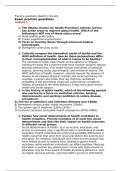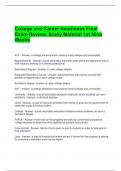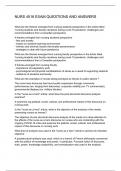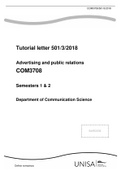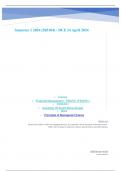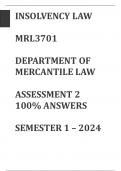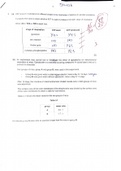Overig
Exam practice questions + answers Health in society
- Instelling
- Universiteit Utrecht (UU)
Practice questions of the course Health in society All the relevant questions from the book answered + some extra questions regarding the notes of the lectures Answers are also provided
[Meer zien]
